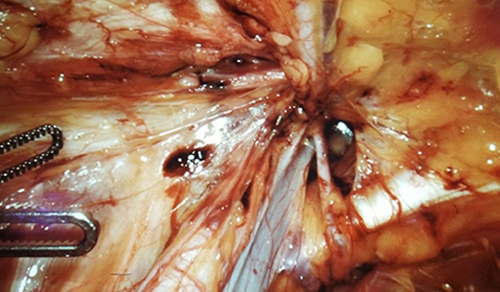A Collaborative Focus on Youth Anxiety

Francis S. Lee, MD, PhD, Research
Co-Director, and Anne Marie Albano, PhD, Clinical Director, Center for Youth Mental Health
Of all the symptoms of psychological disorders, anxiety is perhaps the most prevalent. It occurs as the dominant symptom in general anxiety disorder, social phobia, panic disorder, obsessive-compulsive disorder, and post-traumatic stress disorder. Importantly, a substantial proportion of these conditions have their origins in childhood. According to a national survey of adolescent mental health by the National Institute of Mental Health, about 8 percent of teens ages 13 to 18 are severely impaired by an anxiety disorder. To address this often under-recognized and misdiagnosed condition in children and adolescents, NewYork-Presbyterian established the Center for Youth Mental Health (formerly known as the Youth Anxiety Center) in 2013 in association with Weill Cornell Medicine and Columbia University Medical Center. The Center for Youth Mental Health brings together psychiatrists, psychologists, and neuro-behavioral scientists who integrate patient care, basic and clinical research, and education to create a collaborative focus on one of the most challenging psychiatric disorders affecting society today. Following are some of their innovative efforts in developing clinical programs and research initiatives that are making a difference in the lives of youngsters suffering with anxiety disorders and their families.
Managing Anxiety on the Road to Independence
Anne Marie Albano, PhD, ABPP, Clinical Director of the Center for Youth Mental Health and Director of the Clinic for Anxiety and Related Disorders at NewYork-Presbyterian/Columbia University Medical Center, has devoted her career to the study of anxiety and mood disorders in children, adolescents, and young adults. “Over the many years I have treated children with anxiety it has become apparent that traditional models of parents dropping a child off for therapy and picking them up at the end of the session do not work well,” says Dr. Albano. “While the children may improve in the short-term, we have found over the long-term that 50 percent relapse. Two critical pieces were missing from our treatments. The first was attention to tasks and changes that have to happen developmentally. The second is that you have to treat children with their parents present because they control the context within which kids live.”
“When early anxiety and avoidance behaviors are substantial and unaddressed, children and adolescents do not develop the coping and adaptation skills necessary for young adult functioning,” says John T. Walkup, MD, Director of Child and Adolescent Psychiatry at NewYork-Presbyterian/Weill Cornell Medical Center and Program Co-Director of the Center for Youth Mental Health. “So young people who were 6, 7, and 8 and never had their anxiety treated are now 18 and 19 and have been anxious for a decade or more. They’ve accumulated a fair amount of impairment related to feeling uncomfortable with anxiety, but they’re also coping by avoiding those triggering experiences, which are usually developmentally appropriate and normal activities. The more they avoid, the less distressed they are. The problem is that the more they avoid, the more they struggle with developing important competencies.”
Parental overprotection also plays a role in a child’s transition to young adulthood. “Parents get drawn into the cycle of anxiety from the time the child is 3 or 5 years of age, the typical age of onset,” continues Dr. Albano. “They’re comforting and reassuring and then they start running interference and over-controlling circumstances to minimize their child’s upset or anxiety. By elementary school the parents are arranging play dates for the child who doesn’t have friends; they’re negotiating with the teacher for the child who needs to have things explained to them differently. The more the parent overprotects and deals for them — and it doesn’t matter if the child is 5, 10, 15, or 25 — the parent is doing the work that the child should be doing.”
“The parents’ fear about how their child is going to manage in any situation keeps them overinvolved to the point that the young adult is unable to make basic decisions.”
— Dr. Anne Marie Albano
Dr. Albano notes that the parents’ fear about how their child is going to manage in any situation keeps them overinvolved to the point that the young adult is unable to make basic decisions. “When they turn 18, they don’t know how to make an appointment with their doctor or dentist — never mind with their psychiatrist or psychologist — because the parents have been doing all of this,” says Dr. Albano. “They go off to college, but the resources and the scaffolding that they’ve had are not there. They don’t know what to do. The parents, for all of their good intentions and love, have inadvertently contributed to their child’s ‘failure to launch.’”
By 2014, Dr. Albano and her colleagues had developed the Launching Emerging Adult Program (LEAP), a transition-focused cognitive behavioral therapy for young adults ages 16 to 28. The program integrates skills needed to help the millennial generation thrive in adulthood. Progressive modules incorporate interventions that address developmental delays and functional impairments maintained in part by dependence on parents or primary caretakers. The young adult learns to manage anxiety through individual and group therapy, and during the same period the parents and child are assisted in setting goals and communicating.
“We actually use the program across the ages now in a developmentally appropriate way, but LEAP is specifically for young adults to make sure that they are dealing with their anxiety and managing the developmental tasks needed to transition from one stage to the next,” says Dr. Albano. “Our therapists also help parents to let go of their emerging adult and encourage their son or daughter to take on the challenges of becoming independent.”
Dr. Albano advises primary physicians to watch for signs of failing to launch in their young patients with anxiety. “Is the parent always there with the adolescent or young adult you’re seeing? Are they the ones telling you what’s going on with your 18, 22, and 25-year-old patient? If so, there is an issue,” she says. “I tell parents that by the time their child is pubertal they should not be in that exam room with the doctor.”
“We want to help physicians identify why a person is not launching,” adds Dr. Albano. “If it’s because of anxiety, there’s so much that we can offer not only for the child, but for the parents as well. It is important for young people to learn as early as possible to advocate for themselves and for parents to learn that it is ok to step back.”
The Hippocampus: Holding the Key to Fear Erasure?
“For multiple decades, clinical psychiatrists have been trying to treat depression and anxiety disorders, and basic researchers have been trying to figure out the circuitry underlying these disorders,” says Francis S. Lee, MD, PhD, Vice Chair for Research in the Department of Psychiatry, NewYork-Presbyterian/Weill Cornell, and Research Co-Director of the Center for Youth Mental Health. “In order to find transformative treatments, we needed to have a new way of doing research, where basic scientists work hand in hand with clinical psychiatrists and translational researchers to come up with new ideas and new paradigms that span the continuum from basic science and animal model research to trials of new medications.”
“In order to find transformative treatments, we needed to have a new way of doing research, where basic scientists work hand in hand with clinical psychiatrists and translational researchers to come up with new ideas and new paradigms.”
— Dr. Francis S. Lee
“At the Center for Youth Mental Health, we bring together people who normally would not have sat at the same table to devise new high-risk/high-reward hypotheses, for example, how to diagnose and treat anxiety disorders at a very early stage,” adds Dr. Lee. “Each pilot project involves teams that include Weill Cornell and Columbia researchers so that we leverage the strength of the two institutions working together.”
One example of such a project focuses on the role of the hippocampus in the memory of fear. It started with an observation made four years ago by Dr. Lee and his colleagues who uncovered research that has had dramatic implications today with their work at the Center for Youth Mental Health. Using a novel “knock-in” mouse, they showed that a common single nucleotide polymorphism may lead to increased forms of anxiety that are resistant to standard drug treatments. They also showed the impact of this polymorphism in both mice and humans on fear-based behaviors across developmental stages.
“By examining fear conditioning in mice as they transitioned into and out of adolescence, we found that a suppression of contextual fear occurs,” says Dr. Lee. “Although contextual fear memories were not expressed during early adolescence, they could be retrieved and expressed as the mice transitioned out of adolescence.”
“Everybody talks about adolescence as a period of great struggle and great turmoil,” says Dr. Lee. “However, we came up with the counterintuitive idea that adolescence is a period of opportunity and plasticity and there are parts of the brain that are developing in a much more plastic way that help the adolescent. The hippocampus was previously thought to be involved with spatial memory, but it also seems to be involved in how one handles anxiety and fears. We found that the brain of an adolescent mouse appears to be more plastic and can, essentially, extinguish fears and diminish anxiety at a much more efficient rate than an adult mouse.”

Researchers found links between the hippocampus and the prefrontal cortex in adolescence that provides clues to diminishing fears.
Researchers in a recent study across multiple centers, including Weill Cornell, identified a period of neural development during which existing behavioral interventions could be modified in an age-specific manner to lessen adolescent fear memories from persisting into adulthood. Discovering a surge of connections between the hippocampus with the prefrontal cortex that occurs only in adolescence, the researchers hypothesized that perhaps they could stimulate the hippocampus to actually extinguish fears during this period of time. Their findings, which were published in Nature Communications in 2016, “identify novel strategies that leverage dynamic neurodevelopmental changes during adolescence with the potential to extinguish pathological fears present in anxiety and stress-related disorders.”
“We found that if you stimulate the hippocampus by giving spatial cues, you can actually get to a form of diminishing fear to a level that we refer to in scientific terms as fear erasure,” explains Dr. Lee.
Now research funded by the Center for Youth Mental Health is seeking to translate these findings from animals to patients to identify how individual variation contributes to risk and resilience for anxiety disorders and how clinical treatments can be optimized by targeting the biological states of the developing brain. This started with examining fear memories in patients with anxiety disorders conducted by Shannon M. Bennett, PhD, Co-Director of the Pediatric OCD, Anxiety, and Tic Disorders Program at Weill Cornell, and by Michael G. Wheaton, PhD, Adjunct Associate Research Scientist in the Department of Psychiatry at Columbia. These basic science findings by Dr. Lee have also led to a new perspective on anxiety treatment by Dr. Albano.
A New Perspective on Anxiety Treatment
When Dr. Lee was discussing the study’s results with Dr. Albano, she suggested developing a human component, devising a task that can be used for patients with anxiety. Dr. Albano had recently begun exploring the application of virtual therapy in her anxiety clinic, and they began to conceive a virtual reality therapy for treating social anxiety disorder, the most common of anxiety disorders in young adults.
“We use scenarios such as a virtual classroom and professor, a virtual dorm room, or a virtual party,” says Dr. Albano. “The therapist can manipulate what the avatars say and do, challenging the patient’s fears so that they can put their newly acquired tools to work to mitigate their anxiety.”
“If we know that adolescents are having difficulty extinguishing fears, we then give them a hippocampal-based stimulation by putting them back into the same context where they had been stressed or shocked,” says Dr. Lee. “During this fear extinction session, the hippocampus figures out where you are and if this is a dangerous place to be. We found that just doing a 45-minute session of putting them back in significantly attenuates the fear-related memory. If you do this fear extinction session later in adulthood, it doesn’t work as efficiently. Thus, you have a unique time window to do it in adolescence.”

An adolescent patient is exposed to a dorm room scenario to facilitate joining a group conversation. (Created by Anne Marie Albano, PhD, Director, and Leng Lee, DPhil, Research Collaborator, Columbia University Clinic for Anxiety and Related Disorders)
Dr. Albano and Dr. Lee are optimistic that this is a way forward in psychiatric research that will help to advance clinical care. “We’re doing the best that we can based on the knowledge that we have now,” says Dr. Lee. “It’s vigorous, basic neuroscience that we then apply to treatment in humans. We’re not adding more drugs, but using what we know now about how the adolescent brain develops and personalizing treatment.”
In addition to translating basic findings in neuroscience to patients as described above, the Center for Youth Mental Health is also pursuing other types of research. These include studies at Columbia University Medical Center testing the effects of novel medications conducted by Franklin R. Schneier, MD, research psychiatrist in the Anxiety Disorders Clinic at New York State Psychiatric Institute, and Blair Simpson, MD, PhD, Vice Chair of Research, Department of Psychiatry at Columbia and Research Co-Director of the Center for Youth Mental Health, and epidemiological studies to establish the prevalence of youth anxiety in the United States conducted by Cristiane Duarte, PhD, MPH, Co-Director of the Center for Youth Mental Health, and Mark Olfson, MD, MPH, Co-Director of the AHRQ Center for Education and Research on Mental Health Therapeutics. The overall mission is to transform the understanding of and treatments for youth with anxiety and to pave the way to preventions and cures.
“Anxiety is a serious problem for many young people right at the time when they need to take risks to become more independent,” says Jeremy Veenstra-Vanderweele, MD, the new Director of Child and Adolescent Psychiatry at NewYork-Presbyterian/Columbia University Medical Center and a new member of the Center for Youth Mental Health. “Our collaborative approach connects world-class clinicians with cutting-edge researchers who are in constant dialogue. The Center is then uniquely poised to not only pursue innovations in research settings, but also to make these innovations available in the clinic to youth and families in need.”
Reference Articles
Lee P, Zehgeer A, Ginsburg GS, McCracken J, Keeton C, Kendall PC, Birmaher B, Sakolsky D, Walkup J, Peris T, Albano AM, Compton S. Child and adolescent adherence with cognitive behavioral therapy for anxiety: Predictors and associations with outcomes. Journal of Clinical Child and Adolescent Psychology. 2017 Apr 27:1-12.
Gray JD, Rubin TG, Kogan JF, Marrocco J, Weidmann J, Lindkvist S, Lee FS, Schmidt EF, McEwen BS. Translational profiling of stress-induced neuroplasticity in the CA3 pyramidal neurons of BDNF Val66Met mice. Molecular Psychiatry. 2016 Dec 13. [Epub ahead of print]
Dincheva I, Lynch NB, Lee FS. The role of BDNF in the development of fear learning. Depression and Anxiety. 2016 Oct;33(10):907-16.
Pattwell SS, Liston C, Jing D, Ninan I, Yang RR, Witztum J, Murdock MH, Dincheva I, Bath KG, Casey BJ, Deisseroth K, Lee FS. Dynamic changes in neural circuitry during adolescence are associated with persistent attenuation of fear memories. Nature Communications. 2016 May 24;7:11475.








